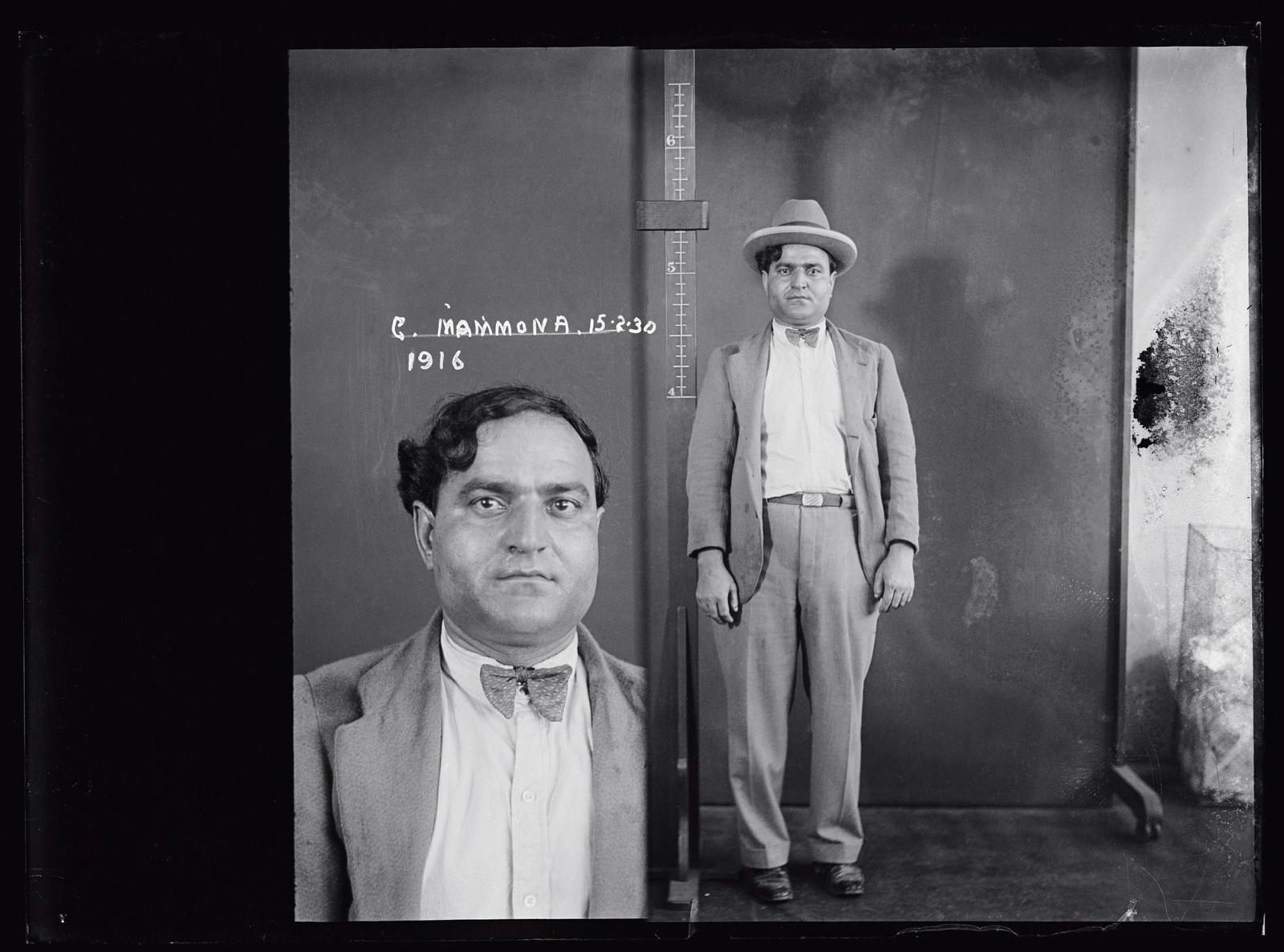Central Police Station – a policeman’s critique
Most of the Special photographs were taken in the yards at Sydney’s Central Police Station, located in the central business district next to the Central court complex.
Inspector (later Commissioner) William ‘Bill’ MacKay toured Europe and America in 1928 to study policing methods, and in 1929 he wrote a detailed report about the inadequacies of the Central Police Station, outlining his concern that the lack of space in the building led to the intimidation of witnesses and the exposure of possibly innocent suspects to the public gaze. He noted that the best examples of police building architecture were in the US cities of Detroit and St Louis. These modern police headquarters impressed him with their steel cells, hot showers for prisoners, comfortable detention rooms for first-time offenders and even a gymnasium for police officers.
His thoughts on Central Police Station are transcribed below:
It is necessary to here also direct attention to the conditions prevailing at the Central Police Station – the most important and the busiest Police Station in the Metropolitan District. The Central Police Station is totally unsuited to meet modern requirements: it is obsolete; the accommodation and facilities in the charge room are insufficient and unsatisfactory; there is not a room available there in which a Detective or Policeman can interview a complainant or prisoner, nor is there a room in which to detain a suspected person pending identification, nor for accommodating witnesses called there to identify suspects, nor is there a room in which persons may be lined up for identification purposes in a satisfactory manner. At present it is necessary to detain suspects on a 4ft bench in the charge room in full view of the public visiting there on business and within hearing of the business being transacted; the “line-up” for identifications takes place in an exercise yard at the rear of the cells, and men and women called to identify suspects have to pass through cell corridors, in view of large numbers of prisoners, and are frequently unnerved in the process when they arrive at the place of identification; all this is out of date and most unsatisfactory from public and Police points of view. The facilities in the matter of cells and rooms for attending to the wants of female prisoners (First Offenders included) and for the taking of finger prints, photographs, descriptions and other particulars of prisoners are, to say the least, primitive.
Published on
More Underworld

Underworld
Plotters
Parting fools from their money was the plotter’s goal, and took careful planning and superior powers of persuasion

Underworld
Petty crims
Petty criminals made up the largest group of felons and committed a diverse array of crimes, ranging from stealing to using offensive language

Underworld
The Black Hand in Sydney
Restrictions on the sale of alcohol offered tantalising opportunities for organised crime groups around the world
